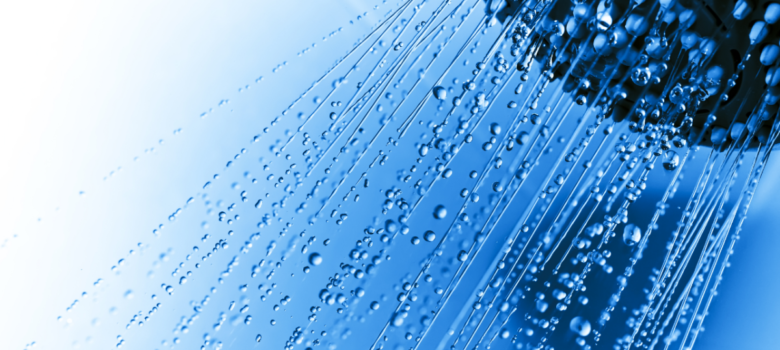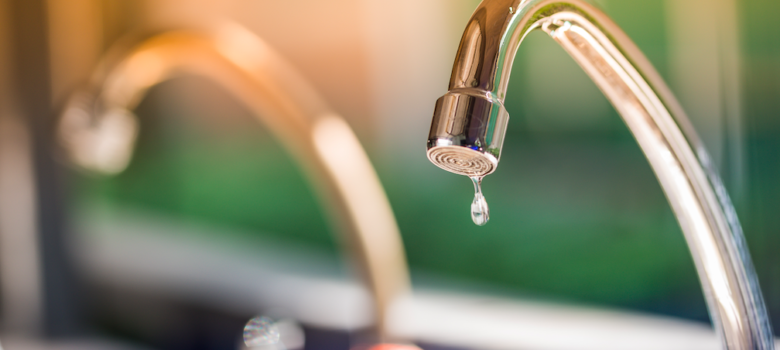
Water-saving shower heads
The average shower in the UK last 8 minutes and in that time an estimated 60 litres of water is used. Even if you don’t pay for the specific amount of water you use (i.e. you are unmetered), you still need to heat the water for showers, so using less hot water, means you have to heat less, so you save on your heating bills.
Elsewhere in our water saving section we look at behavioural changes you can make to use less water when you are in the shower, but a water saving showerhead is a solution that you can install in your shower to dramatically reduce the amount of water you use.
How do water-saving shower heads work?
These shower heads work by restricting the volume of water that they allow to flow through them. Newer models can reduce the volume of water used by half, but still provide an enjoyable showering experience!
It is important to point out that if you have an electric shower or a shower with very low pressure, a water-saving shower head will probably not be suitable for your home.
There are two main types of ‘low flow’ water saving shower heads.
Non-aerating shower heads
These work by restricting the water flow through them and squeezing it through very small holes. This means the water comes out under more pressure, so it gives a harder, more massaging showering experience.
Aerating shower heads
These are slightly more complex and work by mixing the restricted flow of water with air, therefore the water appears to come out of the showerhead in higher volume, replicating a normal shower, this will therefore provide a softer showering experience.
How are low flow shower heads fitted?
Both types of shower head are fairly easily to install. If you are replacing a shower head on a flexible hose, then you simply need to unscrew the existing shower head and screw on the low flow one in its place.
To ensure a really snug fit and no leakages from the top of the hose, you can use plumbing tape. Simply cut a short length of plumbing tape and wrap it around the thread of the new showerhead and screw this into the hose.
To replace a fixed showerhead, it is exactly the same principle except you might need a spanner to remove the old showerhead and tighten the new low flow one into place.
Aerated versus non-aerated showerheads
Since aerated showerheads combine room temperature air with the water to ‘flesh it out’, people tend to increase the temperature of their showers to compensate.
Water coming out a non-aerated showerhead will come out under higher pressure so the jets will feel harder on the skin. Conversely, the aerated showerhead will produce a far softer showering experience.
Benefits
- Water saving shower heads reduce the amount of water you use during your normal shower.
- Water saving shower heads are incredibly simple to fit in existing shower units.
Limitations
- Only worth the payback if you are on a meter
Cost
- Can be cheap, as little as £15













hi,
we have searched for an appropriate showerhead for almost 2,5 years meaning that we have tested more than 15 models, almost everything at Amazon that is labelled as „water saving shower head“. We were quite disappointed for these shower heads were not able to satisfy our expectations. Having tested more than 15 models one gets a quite good feeling for eco shower heads. Taking a shower is not fun with a reduced amount of water and it takes longer.
But the good news is, finally we have found THE eco shower head that suits us. Just search at google the following “New 2014 Multifunction Bathroom Water-Saving Spray Anion Double Filter Shower Head Nozzle“. You will see yourself that it costs only 10 £. In combination with a water-flow-reducer it uses only 4,2 litres per minute while using the spray-function (Without any water-flow reducer, it uses approximately 7.2 l/m). And the good news is: the female persons in our household, three in sum, have all long hair. They don’t mind showering with such a reduced amount of water. Actually, they love it and this means a lot. After having tested more than 15 eco shower heads one gets a very good feeling for using a water saving shower head. That’s all but fun. But not the shower head we propose. On the contrary! We love it because it does not feel like a water saving shower head even if it uses only 4.2 litres per minute.
In Germany the electricity and water prices are quite high so we have to be very careful with its usage. Now we can save more than 450,00 £ and tonnes of CO2. I’ve written various articles in German blogs, where I advise the reader to buy exactly this showerhead because of its efficiency and because it’s so cheap. Families can save hundreds of £ and tonnes of CO2. Give it a try and you will get convinced: )
Kind regards
Hello,
Could you please comment on water flow rates for all the other models you tried, to sort of benchmark them on their consumption efficiencies?
I’m particularly interested in “CherryKelly Metal Handheld Shower Head and Hose Set Washable Boost – Stretchable Stainless Steel Hose – with Brass Fittings Chrome Finish – Silver” since I cannot find anywhere that kind of information.
Thank you very much.
yes it can, i am a trained professional (the best) on this sort of thing and would be happy to help such a cute bunny. the average shower pushes out around 2.1 gallons per minute, and all of our models have been around 2 gallons
The limitation noted above “only worth the payback if on a meter” is completely wrong because it ignores the cost of heating the water which is far more important than the water consumption.
Awesome! No words. You always go one step beyond.
There is so much great, useful information here. Thank you! Thank you! Thank you!
Read our guide if you wish.
bestofcleaner
Thanks again 🙂